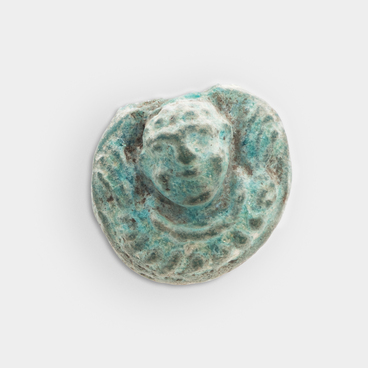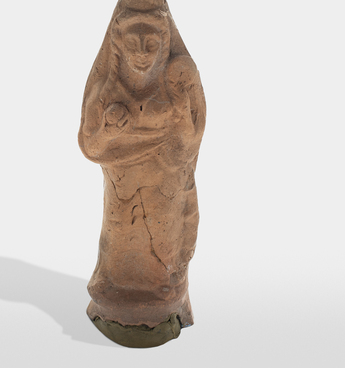The small altar, on display at the Tanais Archaeological Museum-Reserve, was found in an estate in the central part of the citadel. It was discovered in a basement that was destroyed by fire in the middle of the 3rd century CE. This building featured a list of finds typical of closed Tanais complexes. It included tableware and wine amphorae stored on the floor. All of these objects were covered with a thick layer of rubble formed by artifacts from the building above ground level. Not many stone or ceramic altars and other cult items have been found in Tanais. However, they indicate that the cults of Greek gods were practiced not only in a central temple, but also in smaller domestic shrines.
This ceramic altar is a low, hollow object with a rectangular cross-section. It is crowned with a high, rectangular tank with thick walls. The edges of the tank are cut off at a right angle. The tank has a smooth inner surface with the sides rounded at the bottom. The outside of the tank is decorated with a relief frieze consisting of small twigs that are obliquely arranged and separated by two small notches. The frieze is enclosed by two grooves. There is a third groove at the very bottom of the tank. It ends with an overhanging ledge, which marks the transition to the lower part of the altar. Under the tank, on the front side, there is a relief image of a standing female deity. The deity has a crown-shaped hairstyle with a parting in the center and side strands of hair that form beads. Behind her left shoulder, there is the upper part of a rod with a ball-shaped finial. The rod surface is decorated with oblique beads, resembling the design of rods on medallions. The deity’s torso appears to be defaced, but it is clear that the lowered right arm is bent at the elbow and pressed against the chest, while the left hand, with a wide twisted bracelet on the forearm (which is typical of the images of Aphrodite), is raised to the shoulder in an open position. Above the right shoulder, the surface of the altar has been preserved without any damage, as evidenced by the remaining coloring. There are no traces of a quiver, nor any figures of the Erotes, which are characteristic of the images of Aphrodite Urania. According to researchers, this altar probably depicts Aphrodite.



